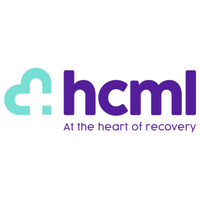Why a personalised approach is key to preventative health
Preventative wellbeing/health refers to measures that maintain and improve health and quality of life, with the goal of preventing illness, injury or other health concerns before they present themselves.
From a corporate private medical or group risk insurance perspective, this might focus on solutions such as health screenings and assessments and chronic disease management designed to prevent the onset of diseases or conditions.
From a wider workplace wellbeing perspective, this may also incorporate lifestyle factors, encouraging healthy habits such as balanced nutrition, regular exercise, adequate sleep and stress management.
But it’s what happens when you take a personalised approach to lifestyle factors that really makes a difference when it comes to preventative health and wellbeing.
Humans are complex, but most health benefits are there at the point of ill health and focus on a specific health condition with the aim to alleviate symptoms.
Often, intervention is clinical in nature, such as for example, a recommendation of six sessions of physiotherapy for an employee with back pain.
But what about their belief that they won’t recover because ‘having aches and pains are just a part of getting older’ or the fact that they rarely do any physical activity?
Underlying causes
From our client data, we’ve found that 85% of ill health – especially musculoskeletal, mental health, digestive and skin conditions – are associated with underlying causes and contributory risk factors.
Many conditions can be managed without clinical intervention or a combination of clinical combined with non-clinical measures such as nutrition advice, sleep management, activity management and mental health support to address lifestyle factors driving the condition.
By identifying the problems specific to an individual and personalising health and wellbeing programmes, employees begin to understand their risk factors and the benefits of taking control of their health.
Furthermore, understanding lifestyle factors through data analysis means you can start to put in support and interventions specific to your workforce’s health and wellbeing profile.
For example, take a workplace in which a large proportion of employees spend most of their time driving vans. The employer sees plenty of musculoskeletal (MSK) complaints and their current health and wellbeing solution is to refer employees for physiotherapy.
While this might improve the MSK condition, it’s likely to be a short-term fix, as the underlying cause and risk factors have not been addressed.
Focus on the whole person
Therefore, the condition repeats, costing the business more money in sickness absence and MSK interventions. Focus on the whole person to understand underlying causes and risk factors and you can start to prevent repeat and additional ill-health conditions.
Once you have this blueprint, patterns will emerge. Good data capture and analysis is crucial to take action to:
- Identify ill-health trends in workplace health and wellbeing
- Help you understand the key areas of health risk for your workforce
- Enable you to put in the right strategies to support employee health and wellbeing in these specific areas
You’ll find you are no longer wasting time and money on interventions that provide short-term fixes until the health condition reappears.
Instead, you will be putting in measures that will not only address the health concerns of your workforce but pre-empt them through suitable health and wellbeing benefits and support. This is prevention at its best.
Preventative health and wellbeing should be part of a wellbeing strategy because it is more effective and efficient than treating problems after they arise.
Research shows that investing in prevention can save costs and resources in the long term, by reducing the burden on the health care system, the workplace, and society.
Prevention can also create a positive culture of wellbeing, where people are empowered to take charge of their health and wellbeing and where they can access the resources and support they need to thrive.
A wellbeing strategy that includes prevention can benefit individuals, organisations, and communities, by promoting health, happiness, and resilience.
Supplied by REBA Associate Member, HCML
HCML is a health and wellbeing provider, offering integrated and personalised healthcare solutions.








